Video Transcript: Unit 4 Lecture 2
The Apostolic fathers is a term used to describe the writings which have come down to us from the late first century and into the second. These are people who are thought to have been mentored by the Apostles of Jesus. They have left us some writings which help us to get a look at the sort of things that concerned the church at the turn of the first century and in the decades that began the second century after Jesus.
The apostolic fathers were the first leaders who helped the church to make the transition from a world where people had personally known Jesus to one where the writings of the apostles were the source of our knowledge of Jesus. So they form a very important link in the history of the church. They are people who knew Jesus because another had told them of him. They were leaders because many churches looked up to them as being personally aware of what Jesus wanted in their life together because they had known at least one of the apostles.
So the apostolic fathers are important to our study of church history in that they help us to see how the scriptures were used to have a standard on which to stand. The holy writings were the source of insights and wisdom in how to make the most of walking by faith each day.
The basic list of the apostolic fathers varies. But this is a commonly accepted group of writings and persons
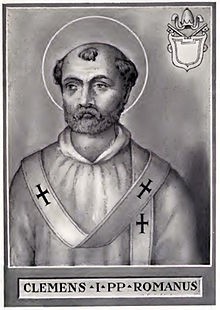 1)Clement of Rome, the third successor toPeteras Bishop of Rome, "had seen the blessed Apostles (Peter and Paul) and had been conversant with them" (Irenaeus,Adversus Haereses, III, iii, 3).
1)Clement of Rome, the third successor toPeteras Bishop of Rome, "had seen the blessed Apostles (Peter and Paul) and had been conversant with them" (Irenaeus,Adversus Haereses, III, iii, 3).
a.From Clement we have what are known as his letters. First clement is a letter that he prepared and sent to the church in Corinth. In it, Clement calls the church to repent of becoming divided. What seems to have happened is that a group of young men had revolted against the leadership of the elders in the church and had decided to go their own way. Clement calls them to return to the structure that God had given them. He calls for respecting those in authority over us. One of his main points is in the way he uses the orderliness of the created world to call his readers to account for their disorderly conduct.
b.Second clement is not thought to actually be from the hand of the same person as first clement. What the letter seems to be is a transcript of a sermon delivered sometime around the year 100 in a worship service somewhere which was copied over and distributed in the name of Clement. It has some references to a previous period in the lives of those addressed when their minds were crippled and they worshipped wood, and stone.
2)Ignatius of Antiochwas the second successor of Peter in the See of Antioch (Eusebius, Hist. Eccl., III, 36) and during his life in the center of Christian activity he may have met with others of the Apostolic band. An accepted tradition, substantiated by the similarity of Ignatius's thought with the ideas of the Johannine writings, declares that he was a disciple of theApostle John.
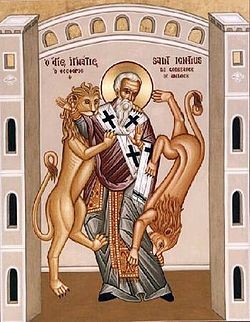 A.Ignatius was the bishop of Antioch - the city mentioned in the book of Acts where the followers of Jesus were first called Christians. While he led the church there, a persecution arose and he was arrested for believing in the superstition which was repugnant to the romans. After his arrest, it was decided that such a valued leader of the Christians should be taken to Rome to be killed as an example to all of those who might think they could join the hated group.
A.Ignatius was the bishop of Antioch - the city mentioned in the book of Acts where the followers of Jesus were first called Christians. While he led the church there, a persecution arose and he was arrested for believing in the superstition which was repugnant to the romans. After his arrest, it was decided that such a valued leader of the Christians should be taken to Rome to be killed as an example to all of those who might think they could join the hated group.
B.On his way he was chained to what he called ten leopards, a group of ten soldiers who, when treated with kindness became worse in their treatment of him. It was while they were on their way to Rome, that Ignatius, at a city where they stopped along the way, wrote seven letters which we have yet today. One of the letters was addressed to the Church of Rome. In it he asks them to not plead his case to the emperor. He is going to die for Christ and that will be his entry into life everlasting.
3. Polycarp was "instructed by Apostles" (Irenaeus, op. cit., III, iii, 4) and had been a disciple ofJohn(Eusebius, op. cit., III, 36; V, 20) whose contemporary he was for nearly twenty years. He later trained Irenaeusas a
disciple, thus giving Irenaeus' teachings great reliability and authority.
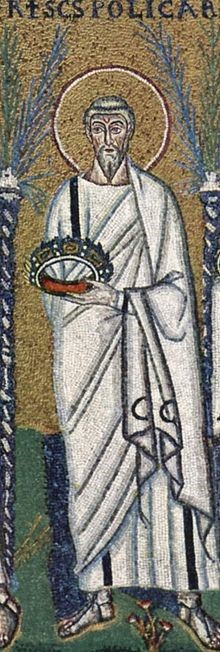
We are going to hear about the martyrdom of Polycarp more next week.
3)TheDidache, also known asThe Teaching of the Lord to the Gentiles by the Twelve Apostles, orThe Teaching of the (Twelve) Apostlesis basically a handbook or manual of Christian ethical instruction and church order (Holmes,Dictionary of the Later New Testament & Its Developments, p. 301).
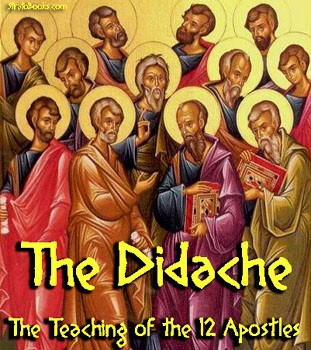
We have looked at the teaching of the Didache previously. I mention it here again since it is considered an important part of the legacy left to us by the apostolic fathers.
4)The Epistle of Barnabas is an early second century document concerned with showing that Christians are the true heirs of God's covenant. Its author remains anonymous.
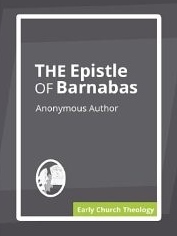
The epistle of Barnabas is named for the man who took Paul under his wing and mentored him when Paul had first had his vision of Jesus. It is either a general treatise or was intended for some community in which Alexandrian ideas prevailed, though it is not possible to define either its destination, or the locality from which it was written, with any greater accuracy. Its main object is to warn Christians against a Judaistic conception of the Old Testament, and the writer carries a symbolic exegesis as far as did Philo; indeed he goes farther and apparently denies any literal significance at all to the commands of the Law. The literal exegesis of the ceremonial law is to him a device of an evil angel who deceived the Jews.
5)The Shepherd of Hermas was a popular document in the second and third centuries. It's significance rests in that it sheds light on the Christian situation at Rome in the mid-second century. The author(s) is unknown.
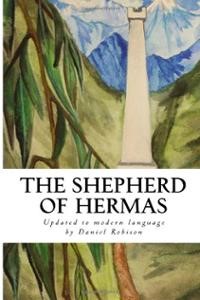
Each revelation is accompanied by an explanation, and from these it can be seen that though the form of the book is apocalyptic and visionary, its object is practical and ethical. The main problem, which constantly recurs, is that of sin after baptism. In the circle to which Hermas belonged the belief obtained that Christians after baptism were capable of leading sinless lives, and that if they fell they could not again obtain forgiveness. Experience, however, had shown that in this case few indeed would be saved, and the message of Hermas was that for sin after baptism there was still the possibility of forgiveness for those who repented, though this repentance would not avail more than once. A great part of the book is taken up in developing the details of this doctrine of repentance, which is entrusted to an angel called the Shepherd, who gives his name to the book, and it is obvious that we have here the beginning of the Catholic doctrine of penance.
The Shepherd is divided into Visions (in the last of which the Shepherd appears), Commandments or Mandates, as they are more usually called, and Parables or Similitudes. It may roughly be said that in the Visions the necessity for repentance is enforced, in the Mandates the life required for the penitent is explained, and in the Similitudes the working and theological doctrine of repentance is developed.
